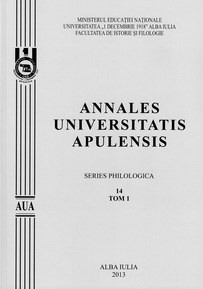Our daily press. A ”Spectral Analysis” of the Romanian press after 1989
Our daily press. A ”Spectral Analysis” of the Romanian press after 1989
Author(s): Liviu AntoneseiSubject(s): Cultural Essay, Political Essay, Societal Essay
Published by: Universitatea »1 Decembrie 1918« Alba Iulia
Keywords: mass media; European Alternatives; press; the liberty of media; Press Monitor
Summary/Abstract: In mid-February 2011, I attended by chance a very interesting debate as a special guest, the topic was The Liberty of Media in Romania: common solutions for common problems, which was part of a program started by a Bristish civic organization called European Alternatives - www.euroalter.com - referring to the liberty of media in the entire Europe. Before exploring the space of our press, the British organization did the same thing in Italy, then in other few countries from the Eastern and Western parts of the continent. In Romania, the organization coordinated by Mrs. Anca Magyar already has ”an antenna” in Cluj, composed of journalists, civic activists, students etc. Some of them accompanied the rest of the team in Iaşi. Again by chance I was also asked for a text for the volume Mass media şi democraţia în România post-comunistă (Mass media and Democracy in Post-communist Romania), coordinated by my nice former students, now friends and collaborators, Daniel Şandru and Sorin Bocancea. I thought about taking advantage of these two events in order to try at least to sketch an analysis of the evolution of post-December press, of its relation with the destiny of democracy in our country. It is not my first personal attempt to ”spectrally analyse” indigenous press, but it is only the second one which surpasses the dimensions and ambitions of a newspaper article. The first major test is the study Puterea politică şi „crimele televiziunii”(Political Power and ”The Crimes of Television”), in Press Monitor, Agenţia de Monitorizare a Presei(Media Monitoring Agency), 2-3, 1995, pp. 9-13, where the functioning of TVR is analysed, taking into account the conditions of the monopoly held at the beginning of the ’90s, underlining three manipulation techniques: misinforming, discreet manipulation (sometimes, subliminal) and the anesthetic effect.
Journal: Annales Universitatis Apulensis. Series Philologica
- Issue Year: 14/2013
- Issue No: 2
- Page Range: 227-238
- Page Count: 12
- Language: English

